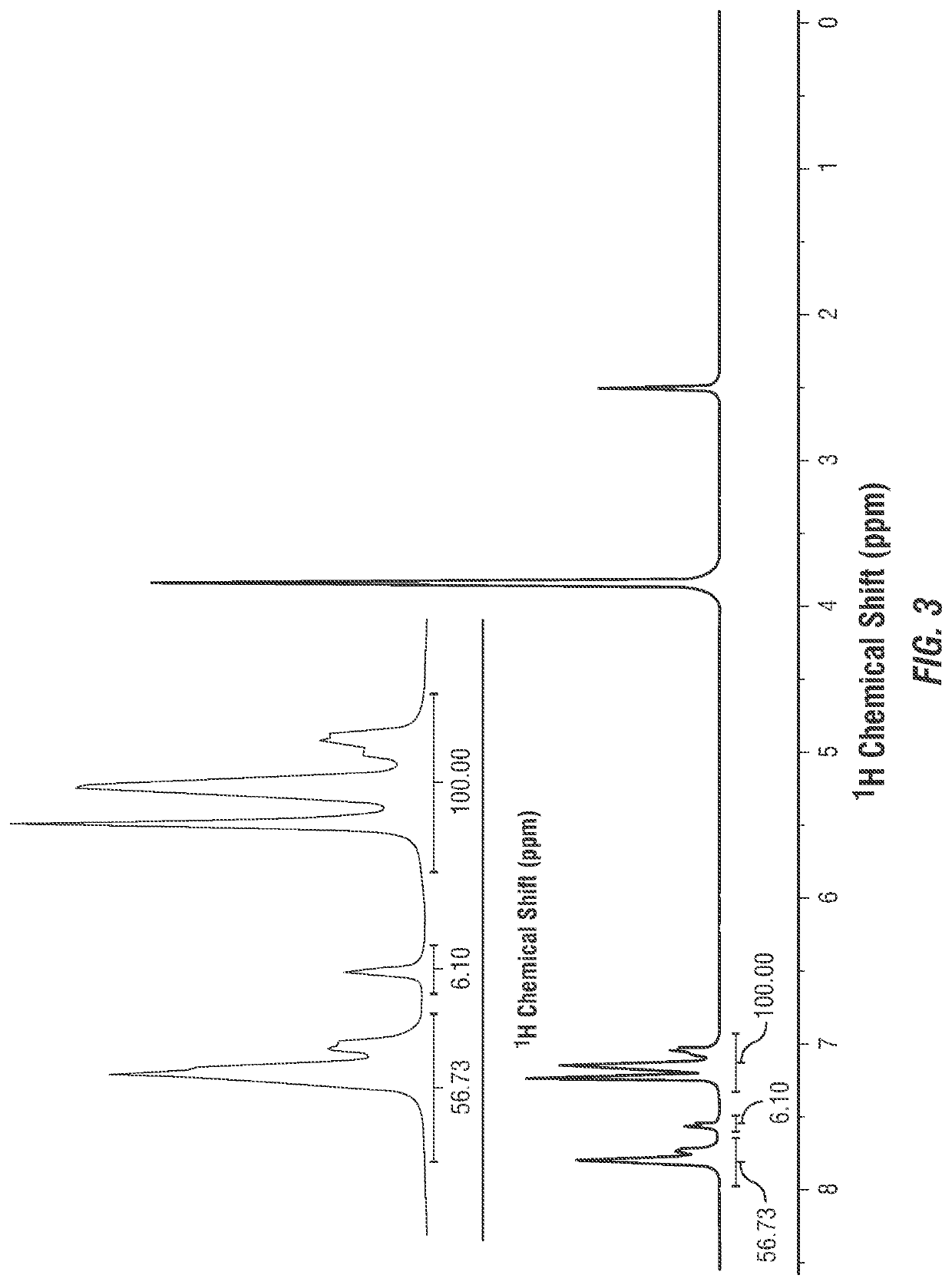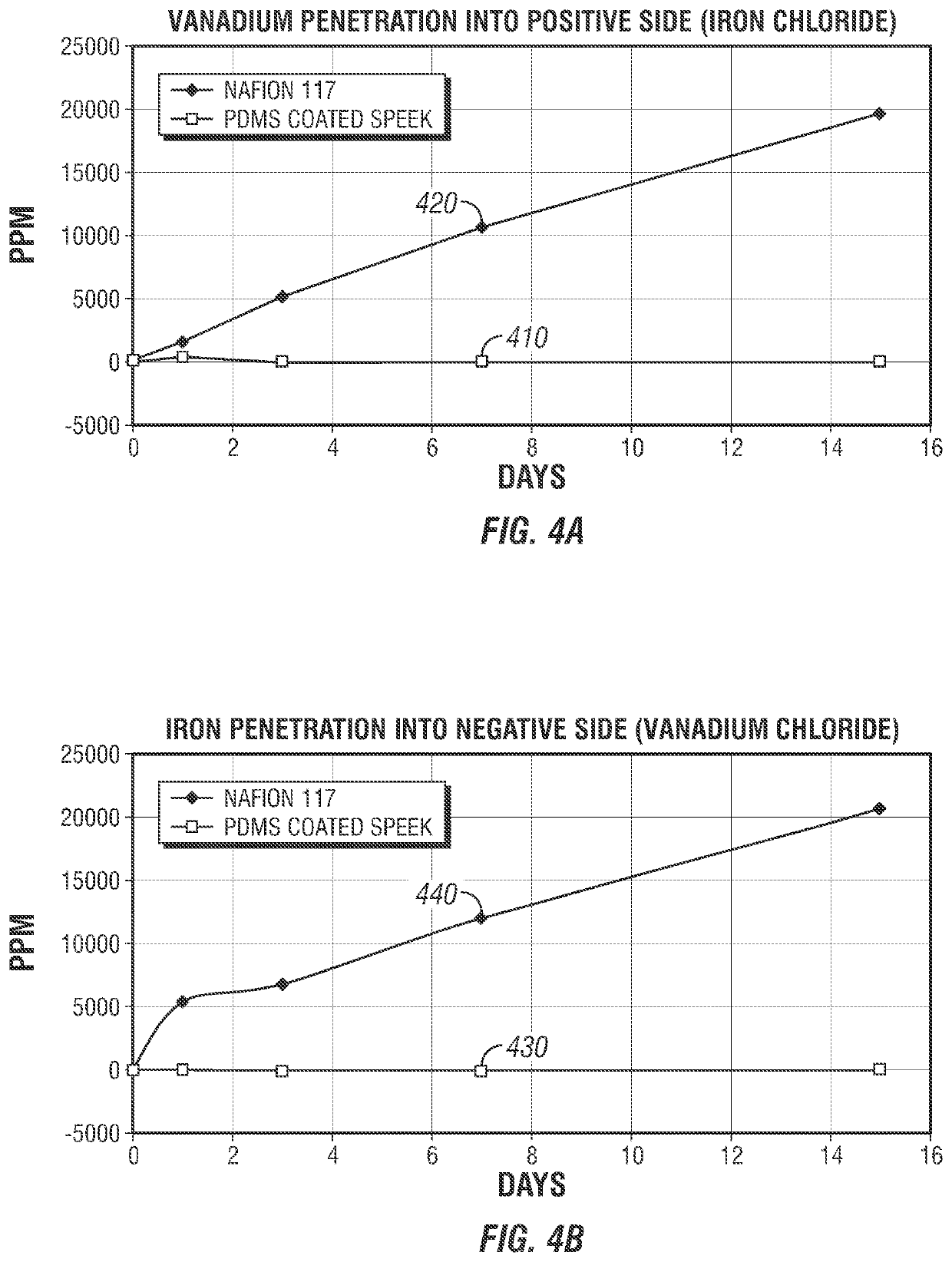Ion exchange membrane for a redox flow battery
- Summary
- Abstract
- Description
- Claims
- Application Information
AI Technical Summary
Benefits of technology
Problems solved by technology
Method used
Image
Examples
example 1
[0055]A SPEEK sample was prepared. A sample of PEEK 450P pellets (Victrex Europa GmbH, Hofheim am Taunus, Germany) was dried in vacuum at about 90 deg. C overnight. 20 grams (g) of the PEEK 450P sample were dissolved in one liter (L) of about 95-98% concentrated sulfuric acid to form a PEEK polymer solution and were vigorously stirred at room temperature for about one hour. The temperature of the PEEK polymer solution was maintained at about 50 deg. C for about 5 hours. The PEEK polymer solution was let to precipitate in an ice-cold water environment under mechanical agitation. The polymer precipitate (that is, SPEEK) was filtered and washed multiple times with distilled water until the pH reached about 7. The washed SPEEK was dried in vacuum at about 90 deg. C for about 12 hours. 1H NMR was conducted to determine the degree of sulfonation of the yielded SPEEK sample. The results are shown in FIG. 3, where the degree of sulfonation of the yielded SPEEK sample was about 43% (100.00%-...
example 2
[0056]A SPEEK membrane sample was prepared using casting and solvent evaporation methods. The SPEEK sample obtained in Example 1 was dissolved in DMSO to form a SPEEK polymer solution having about 2-3 wt. % of SPEEK. The SPEEK polymer solution was filtered through a 0.45 micron filter. The SPEEK polymer solution was casted on a dry clean petri dish and left to dry at room temperature under a nitrogen environment overnight. The resulting SPEEK membrane was heated under a nitrogen flow at about 60 deg. C for about 24 hours. The temperature of the SPEEK membrane was maintained at about 60 deg. C in vacuum for about 24 hours. The temperature of the SPEEK membrane was maintained at about 120 deg. C in vacuum overnight to remove any residual solvent. The SPEEK membrane was cooled to room temperature and peeled off from the petri dish. The peeled-off SPEEK membrane was dried at room temperature under a nitrogen environment for about 8 hours. The thickness of the SPEEK membrane ranged from ...
example 3
[0057]An IEM sample was prepared. A PDMS casting solution having about 1 wt. % of PDMS was prepared by mixing parts A and B of the PDMS (Sylgard™ 184 silicone elastomer, Dow Corning Corp., Midland, Mich.) with cyclohexane at a ratio of about 9:1. The SPEEK membrane sample prepared in Example 2 was immersed in the PDMS casting solution for about 5 minutes at room temperature. The resulting IEM sample having a PDMS-coated SPEEK membrane was taken out from the PDMS casting solution, where the IEM sample was dried at room temperature under a nitrogen environment overnight. The IEM sample was heated at about 60 deg. C under a nitrogen flow for about 24 hours to allow the PDMS layer to cure. The temperature of the IEM sample was maintained at 120 deg. C for about 24 hours to ensure complete curing of the PDMS layer. The curing process involves crosslinking of silicone hydride and vinyl-terminated silicone in the presence of a platinum catalyst where active hydrogens of the Si—H bond attac...
PUM
| Property | Measurement | Unit |
|---|---|---|
| Fraction | aaaaa | aaaaa |
| Fraction | aaaaa | aaaaa |
| Fraction | aaaaa | aaaaa |
Abstract
Description
Claims
Application Information
 Login to View More
Login to View More - R&D
- Intellectual Property
- Life Sciences
- Materials
- Tech Scout
- Unparalleled Data Quality
- Higher Quality Content
- 60% Fewer Hallucinations
Browse by: Latest US Patents, China's latest patents, Technical Efficacy Thesaurus, Application Domain, Technology Topic, Popular Technical Reports.
© 2025 PatSnap. All rights reserved.Legal|Privacy policy|Modern Slavery Act Transparency Statement|Sitemap|About US| Contact US: help@patsnap.com



